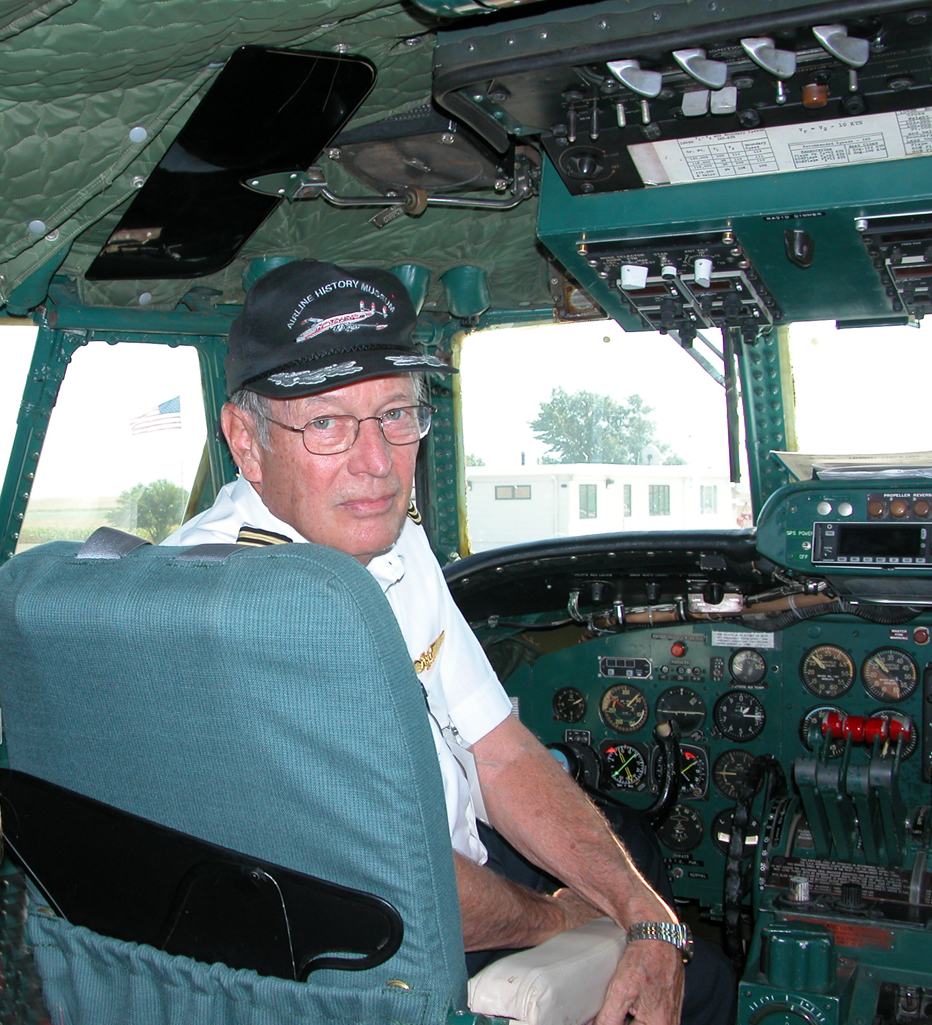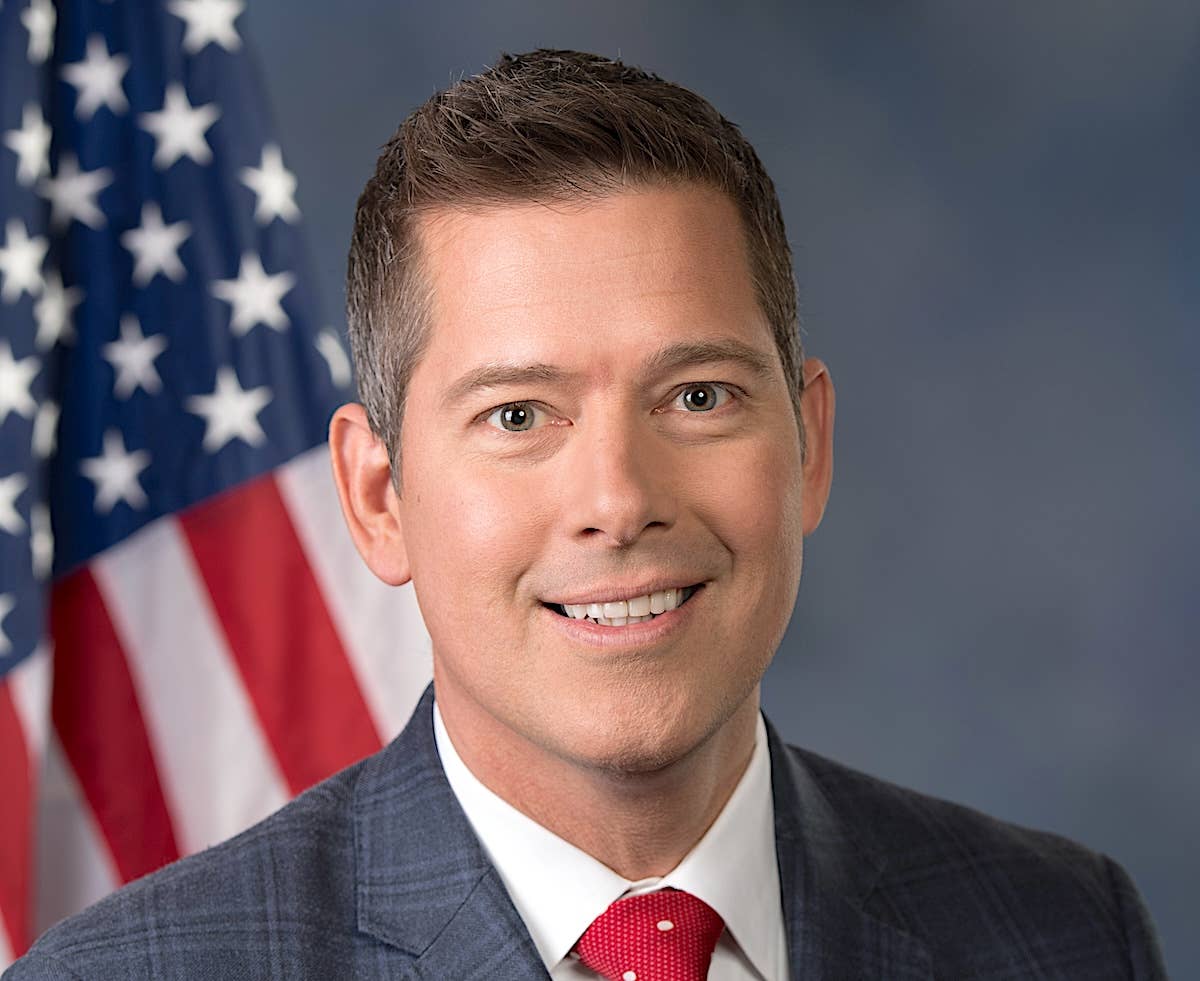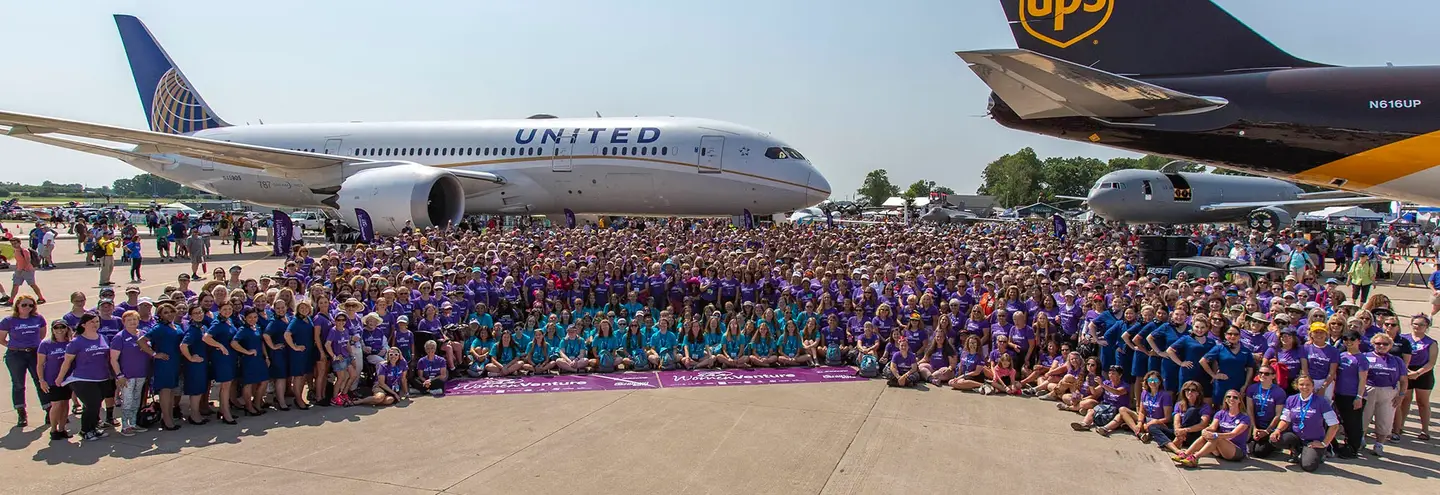Some People Get To Fly Everything
Ever see the Save-A-Connie Lockheed Constellation? This is the story of one of the pilots who returned it from the dead in the desert boneyard. Skip Gatschet’s career was every bit as storied as the airplane itself.

Skip Gatschet in the left seat of the Save-A-Connie L-1049 Constellation.
Be suspicious of articles beginning with, “This is a true story.” Except, this is true: In 1925, Rose Budine, 21, wanted to fly. Like an opening scene from one of my forgotten novels, barnstormer Fred Kane arrived in Kansas City, KS, for a skydiving demonstration. When his regular jumper, Fallon Sashweight, quit, Rose stepped from the crowd and, Kansas corny as it sounds, offered to jump. For free.
Minutes later—on her first ever flight—she climbed from the cockpit onto the biplane’s lower wing and buckled into a parachute attached to a strut. Then, like a deleted scene from Harold Lloyd’s 1923 film, "Safety Last," she jumped. After surviving, Fred handed her $50 and she became a professional parachutist on the barnstorming circuit and would not land in the same airplane in which she took off until her third flight.
Her career boomed, and because every aviation movie needs a love triangle, enter Charles Gatschet in Seneca, KS, 1927. Rose was scheduled to perform, but when her jump plane wouldn’t start, she hired Gatschet and his airplane. Up they went and dazzled the crowd by crashing. Unhurt and unfazed, they teamed up to barnstorm the Midwest, having a grand time staying alive with Charles as pilot and Rose jumping and wing-walking, often while carrying paying passengers in their Standard LS-5 biplane. Regulations were a bit fluid in those days.
Charles and Rose married in 1928 and continued their aerial circus romance with one change. Wedding vows included the usual boilerplate promises to love and whatever but exacted a pledge from Rose to discontinue jumping. Walk the wings, sure, but no jumping. Again, Safety Last.
In 1930, Rose transitioned out of performing and gave birth to Charles W. Gatschet Jr., whom airshow performer Ben Gregory nicknamed “Skip.” Why is a little unclear, but it stuck. Gregory’s gig was to pack fourteen paying passengers into a Ford Trimotor. Initially profitable, but eventually he charged as little as 50 cents for rides. The break-even point was likely north of $7.00 per load. This Depression-era business model of losing a little on each ticket but making it up in volume inspired future cut-rate airlines. People’s Express and Freelandia stumble to mind, but my favorite bellyflop carrier was Taiwan’s U-Land Airlines (seriously). Tough marketing name: “Welcome aboard U-Land, where seats are cheap, but U gotta land this MD-82, ‘cause we can’t afford pilots.”
Charles Sr. had served as a flight instructor during WW I before shipping to France, but he arrived too late to fight in the war-to-end-all-wars-for-now. He reactivated his commission during WW II and died flying a C-46 in the China Burma India theater. Post-accident investigation cited faulty assembly of a Curtis electric propeller that reversed when it should’ve feathered.
Skip served as an Air Force Link Trainer instructor during the Korean War and learned to fly when off duty. After soloing in a J-3 Cub in 1952, he found a used Taylorcraft BC12-D with three of its four 65-HP cylinders able to hold at least some compression. Skip tossed the cracked fourth cylinder onto the scrap pile, exchanging it for a slightly better jug. After bolting it on, he paid the seller $350—for the entire airplane, not just the cylinder. Oddly, the engine wouldn’t produce enough power to lift buyer and seller for a checkout, so student pilot Skip flew solo from Dallas to San Angelo, TX, about 200 miles as the T-Craft flies, which it did at low altitude using all available power. Yes, kids, those were innocent times when student pilots were protected by unseen forces.
Skip navigated his way up the airline career path to retire from TWA in 1986 as a Boeing 767 captain. Enroute, he flew piston twin-engine Martins along the Ohio Valley where you learn to manage ice and thunderstorms or go back to flying Links. Twins led to the four-engine Lockheed L-1049 Constellation, aka Connie. He shuttled from left seat in Connies to right seats in jets—Convair 880 and Boeing 707—and back again to Connies, an airplane Skip favored, despite it being, as he says, “primitive.” Engineers are kept busy monitoring engine temps, while managing a “nightmare” fuel system. None of which detracts from making it the most beautiful airliner ever.
The list of aircraft Skip flew for TWA is impressive: Boeings 707, 720, 727, 757, and 767. Lockheeds included the L1011 TriStar and 1329 JetStar, used primarily for training. James Bond fans might recall the JetStar Pussy Galore flew in the 1964 film, Goldfinger. Spoiler alert: It didn’t go well for Auric Goldfinger in the JetStar, due to faulty windows. And that introduces window issues in the Save-A-Connie Constellation. Skip was involved with the Foundation from its earliest days, donating time and money. In 1989 a crew unpickled the Connie in the desert and flew it to Kansas City Downtown Airport (MKC), home of the Airline Museum. After a year of rebuilding the airframe and hanging four new engines, she was ready for her closeup. If you’ve seen Martin Scorsese’s film "The Aviator," about TWA’s bizarre owner, Howard Hughes, you’ve seen the Save-A-Connie Constellation that Skip and crew flew to California for the movie. The Connie’s windows were unable to support a pressurized cabin, so operations were restricted to low altitudes.
Refurbished, the Connie was expected to spend 10 years barnstorming airshows but, instead, flew for 16, a longer career than U-Land-It airlines had. An airplane’s age doesn’t matter, provided someone keeps replacing parts, but as qualified pilots, engineers and mechanics age out, the Connie’s future is uncertain. Meanwhile, the crown jewel of the Airline Museum sits in Kansas City’s non-flying collection, where anyone of any age is invited to dream.
I’ve barely skimmed the highlights of the Gatschet family’s aviation story. His mother, Rose, did learn to fly but never received a pilot certificate. His father had begun flying in 1914 by building an airplane from plans in Popular Mechanics magazine. Decades later, Skip followed his lead and built a Stitts Playboy (two-seat taildragger) from plans, no kit. He also built an autogyro and rebuilt a derelict Rose Parakeet biplane. And flew them all, which makes his a truly amazing story.






